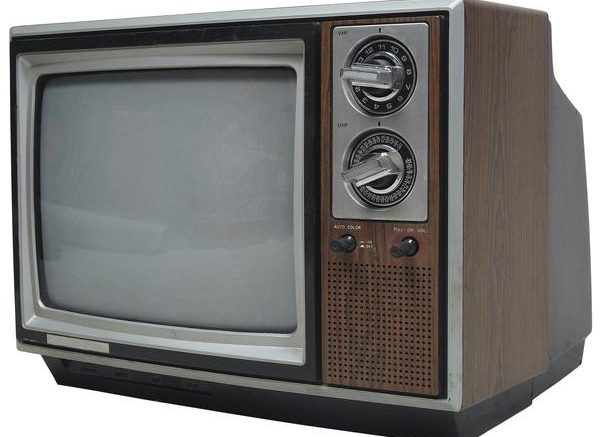There was a time when you could trust that TV content was fairly innocent. Even “jiggle” programs like the 1970’s Charlie’s Angels were pretty innocent by today’s standards. There was no concern about language, nudity, or excessive violence, at least not the way it’s measured today. The evening news was likely to be more violent than prime-time programming.
Back then people worried, though, and as cable TV took off those worries shifted into overdrive. After all, broadcast TV is bound by the FCC’s requirement that the public good be served, and that usually means no excessive violence, no nudity, and no language. In case you haven’t noticed, you can see plenty of that stuff on non-broadcast TV.
What the ratings mean
Parents were right to worry, and the first step in getting a decent parental control system in place is a rating system. A voluntary ratings system went into place in 1997 and you’ll see those ratings on almost every program. There’s a fairly long Wikipedia article about it but let’s boil down what those ratings actually mean to you.
Kid-Friendly ratings
![]() TV-Y is the rating given to all programs that are completely safe for kids. This doesn’t mean that they’re safe for adults of course; kids programming can be extremely weird sometimes.
TV-Y is the rating given to all programs that are completely safe for kids. This doesn’t mean that they’re safe for adults of course; kids programming can be extremely weird sometimes.
![]() TV-Y7 is designed for older kids. This tends to mean there’s actually a plot involved, something that kids have to think about. This programming assumes that kids know the difference between reality and fantasy. Sometimes TV-Y7 programs are listed as “FV” meaning there is fantasy violence, such as cartoon characters coming to a nasty end.
TV-Y7 is designed for older kids. This tends to mean there’s actually a plot involved, something that kids have to think about. This programming assumes that kids know the difference between reality and fantasy. Sometimes TV-Y7 programs are listed as “FV” meaning there is fantasy violence, such as cartoon characters coming to a nasty end.
![]() TV-G is the rating usually given to older TV shows. This is so-called “family programming” … it won’t upset the kids and won’t drive the parents crazy. If you think about the stuff that was on TV when you grew up, most of it is TV-G now.
TV-G is the rating usually given to older TV shows. This is so-called “family programming” … it won’t upset the kids and won’t drive the parents crazy. If you think about the stuff that was on TV when you grew up, most of it is TV-G now.
![]() TV-PG is a little weaselly, just like the PG rating for movies. It’s saying that kids might have questions about this content but it’s not likely that there will be anything that will scar them for life. Parents might want to be around to answer questions, but most likely today’s kids are so savvy that it’s the parents who will be asking questions.
TV-PG is a little weaselly, just like the PG rating for movies. It’s saying that kids might have questions about this content but it’s not likely that there will be anything that will scar them for life. Parents might want to be around to answer questions, but most likely today’s kids are so savvy that it’s the parents who will be asking questions.
Ratings for kids to avoid
![]() TV-14 pretty much describes anything that you, as an adult, might want to watch (unless you’re in the mood for a late-night I Dream of Jeannie marathon.) This is thought-provoking programming that might include suspense, violence, and a little bit of sensuality. You should expect to hear a few words that kids shouldn’t say, although for the most part you won’t get too many four-letter ones.
TV-14 pretty much describes anything that you, as an adult, might want to watch (unless you’re in the mood for a late-night I Dream of Jeannie marathon.) This is thought-provoking programming that might include suspense, violence, and a little bit of sensuality. You should expect to hear a few words that kids shouldn’t say, although for the most part you won’t get too many four-letter ones.
![]() TV-MA is your basic free for all. This could be the stuff you used to see on Saturday nights on Cinemax (or so I’m told), violent fare, as much swearing as you want to hear, essentially the stuff that you should keep kids away from. It’s not likely that you’ll find a lot of TV-MA stuff on broadcast TV.
TV-MA is your basic free for all. This could be the stuff you used to see on Saturday nights on Cinemax (or so I’m told), violent fare, as much swearing as you want to hear, essentially the stuff that you should keep kids away from. It’s not likely that you’ll find a lot of TV-MA stuff on broadcast TV.
The other letters you see
Some of the ratings may also have a secondary letter or two, and these go further to describe why you’re seeing that rating. The ones you’ll see are:
- D – Suggestive dialogue
- L – Coarse language
- S – Sexual content
- V – Violence
So, if you’re really ok with pottymouth talk but you don’t want your kids seeing something that might scar them for life, you can choose your programming a little more carefully.
The important thing to know is that you have the power here: You can use parental controls on your TV to lock out programming that you don’t want your kid to see. Even better, spend time with your kid in front of the TV or with the TV off to know what your kid is watching.





